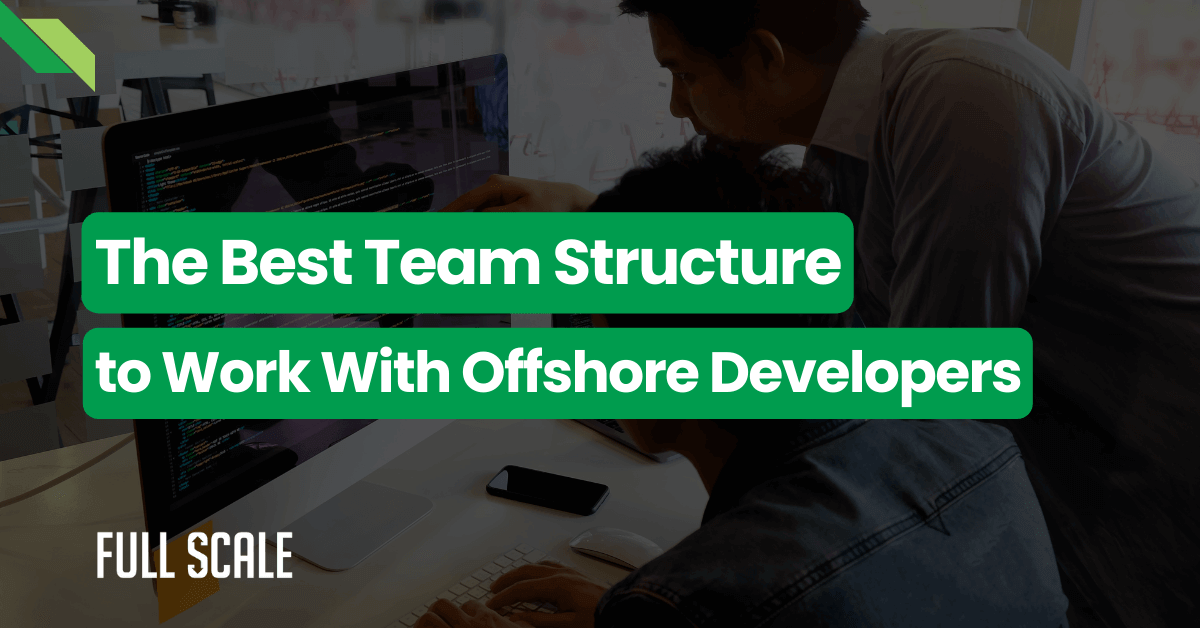Last Updated on 2025-11-10
Most CTOs waste Q4 budget on SaaS tools they’ll never use. Smart CTOs convert it to Q1 hiring capacity.
Your finance team just emailed asking about that $150K in leftover budget. Most CTOs panic and buy enterprise project management tools nobody requested. Smart CTOs lock in Q1 developers right now.
The best end-of-year IT budget ideas start with converting leftover Q4 budget to Q1 hiring capacity through staff augmentation. This approach utilizes a budget before December 31, provides a 3-month hiring head start, and saves 40-60% compared to local hiring costs. While competitors post job descriptions in January, you’re already shipping features.
According to Gartner’s 2024 IT Budget Report, 68% of technology leaders struggle with year-end budget allocation decisions. The most effective year-end budget planning for CTOs focuses on addressing Q1’s biggest challenge: a shortage of developers.
What You'll Learn in This Guide
- Why year-end budget traps happen and how most CTOs waste leftover funds
- The smart strategy: Converting Q4 budget to Q1 team capacity with exact timeline
- Real example: How one SaaS CTO saved $180K and gained an 8-week advantage
- Finance conversation script: Word-for-word language that gets CFO approval
- ROI calculator: Interactive tool showing your exact savings and timeline
- Action plan: Specific steps to execute this week before budget expires
Reading time: 8 minutes • Potential savings: $120K-180K per 3 developers
The End-of-Year IT Budget Trap Most CTOs Fall Into
Leftover budget isn’t a victory. It’s a missed opportunity when you don’t know the right end-of-year IT budget ideas.
Having unused budget at year-end is good planning. Finance views it as an overallocation and reduces next year’s numbers. The “use it or lose it” pressure creates terrible decisions in December.
December 15th hits, and CTOs scramble with poor end-of-year IT budget ideas:
- Enterprise tools with 6-month implementation timelines
- Conference sponsorships for events 8 months away
- Hardware nobody needs until Q3
- Training subscriptions with 20% utilization
According to the 2024 Stack Overflow Developer Survey, average time-to-hire for senior developers now exceeds 90 days. That’s three months of lost velocity while your leftover budget end-of-year sits unused.
Bad Year-End Budget Ideas (That Everyone Does Anyway)
Bad Idea #1: Buying SaaS Tools “For Next Year”
The reality: 6-month implementation, plus the team doesn’t adopt it. The waste: $50K for 15% utilization rates. Congrats on that enterprise Jira add-on. Your team still uses spreadsheets.
Bad Idea #2: Team Bonuses or Perks
Bonuses feel good for one week. Your burned-out team needs help, not money. Bonuses are great. But they don’t write code in Q1.
Bad Idea #3: Hardware or Infrastructure “Upgrades”
Current hardware works fine. Your real bottleneck is people, not processors. $30K on laptops sitting in IT closets until March.
The Smart End-of-Year IT Budget Strategy: Convert Budget to Q1 Team Capacity
Use the Q4 budget to lock in Q1 hiring capacity now. Staff augmentation means committing the budget today, starting developers in January. No waste on tools you don’t need.
| Timeline | Smart CTO (Uses Q4 Budget) | Everyone Else (Waits for Q1) |
|---|---|---|
| Week of Dec 9 | Lock in offshore team capacity | Spending budget on SaaS tools |
| Week of Dec 16 | Reviewing candidates, conducting interviews | Holiday break planning |
| Jan 2, 2026 | New developers start, integrated into team | Posting job descriptions |
| Feb 1, 2026 | Shipping features, ahead of roadmap | Still interviewing candidates |
Calculate Your ROI from Smart End-of-Year IT Budget Ideas
See exactly how much your Q4 budget can save you in Q1. According to Deloitte’s 2024 Global Outsourcing Survey, companies that leverage strategic offshore partnerships reduce development costs by an average of 40-60%.
Year-End Budget ROI Calculator
Adjust the sliders below to see your potential savings. This calculator shows real cost comparisons between local Q1 hiring and strategic year-end budget allocation.
Lock in your Q4 budget before Dec 31
Why Finance Approves These End-of-Year IT Budget Ideas
Your CFO evaluates every dollar against three criteria. This strategy passes all three tests.
- Budget utilization: Money gets allocated before the Dec 31 deadline with no waste
- Cost efficiency: You save 40-60% versus local hiring costs with the same quality
- Flexibility: Month-to-month contracts mean zero long-term risk if priorities shift
Real Example: How One SaaS CTO Used End-of-Year IT Budget Ideas Successfully
A mid-size B2B analytics platform had $150K in unused year-end funds. They needed to ship 3 major features in Q1 2025. Local hiring would take 90+ days and cost $300K.
What They Did:
- Dec 12: Locked in 3 offshore developers for Q1 ($120K from Q4 budget)
- Dec 18-29: Vetting process (12 candidates, 6 interviews, 3 selected)
- Jan 6: All developers started with direct Slack integration
The Results:
- Shipped the entire Q1 roadmap 6 weeks early
- Saved $180K versus local hiring
- Finance approved $200K MORE for Q2 expansion

What Their CTO Said: “Everyone else was scrambling in January. We were shipping. Finance saw the results and immediately approved more budget.”
Year-End Budget Planning for CTOs: The Finance Conversation Script
Your CFO won’t approve: “I want to hire offshore developers.” But they will approve the strategic Q1 capacity planning budget with proper framing.
The Script That Gets Approval
Your opening: “We have $150K remaining in our Q4 budget. I want to convert it to Q1 team capacity through staff augmentation year-end planning. Here’s why this makes financial sense.”
The four points finance cares about:
- Budget utilization: We use the budget before Dec 31, showing strong planning
- Cost efficiency: Saves $120K compared to local hiring in Q1
- Risk mitigation: Month-to-month contracts mean we’re not locked in
- Competitive advantage: 6-8 week head start on product delivery
The close: “Finance cares about budget utilization, cost efficiency, and flexibility. This checks all three boxes.”
Common Objections Handled
“What if priorities change in Q1?” Month-to-month contracts. We’re not locked in. Scale up, scale down, or pivot as needed.
“Why not just hire locally in Q1?” That’s a 90-day process that costs $120K more per developer. We lose Q1 velocity and revenue opportunities.
“How do we know quality is good?” Our 95% retention rate over 3 years proves quality. Here’s a case study from a similar company.
What to Do with Leftover IT Budget: Your Next Steps This Week
It’s already December 5th. You have 26 days before the Q4 budget expires.
This Week’s Actions
- Calculate remaining Q4 budget: Typical range: $80K-150K equals 2-3 senior developers for Q1
- Determine Q1 developer needs: Document specific skills matching your stack requirements
- Schedule finance conversation: Book a 15-minute CFO meeting before Friday using the script above
Next Week’s Actions
- Lock in capacity commitment: Sign an agreement for developer placement with a January 2nd start
- Start developer vetting: Review candidates, conduct interviews, make selections by Dec 20th
- Plan team integration: Schedule kickoff meetings, set up Slack channels, and prepare onboarding

Every day you wait is one less day of Q1 advantage. Your competitors are buying SaaS tools right now. You could be locking in developers instead of using smart year-end spending strategies.
Let's Map Your Year-End Budget Strategy
Not sure if this approach makes sense for your situation? Let’s map out your year-end budget allocation strategy on a 15-minute call this week.
We’ll cover:
- How much Q1 capacity can your leftover budget buy
- Fastest realistic timeline to get developers started
- How to structure the finance conversation for YOUR CFO
- Which developers do you need based on your stack
This is a strategy call, not a sales pitch. We’ll map out your options clearly. If staff augmentation doesn’t make sense, we’ll tell you straight.
Why Partner with Full Scale for Your Year-End Budget Strategy
- 95% developer retention rate over 3 years proves quality and cultural fit
- 500+ successful placements with tech companies validate experience
- Direct Integration Model means no middlemen eating the budget
- Month-to-month contracts provide flexibility if priorities shift
- US-based contracts protect your IP with the American legal framework
- 2-week average placement gets developers working faster than alternatives
- The Philippines’ talent pool gives senior developers at 40-60% cost savings
- Full benefits for developers create the stability your team needs
Or you can spend that $150K on SaaS subscriptions nobody asked for.
Your call. Book before your budget disappears.
Convert the Q4 budget to Q1 developers who actually ship code. Lock in offshore developers in December, start vetting immediately, and have teams operational by January 2nd. This saves 40-60% versus local costs with proven results.
Invest in Q1 team capacity instead of tools or perks. Lock in developer agreements in December using the Q4 budget. Have teams integrated and shipping by early January while competitors struggle. Month-to-month flexibility means you’re not locked into bad decisions.
Focus on three points: budget utilization before Dec 31, cost savings of 40-60% versus local hiring, and month-to-month flexibility. Use the finance conversation script above, showing clear ROI with timeline and cost comparisons.
If it’s before Dec 15, you have time. Week 1: lock in capacity. Week 2: vet developers. January 2: start date. After Dec 20, the timeline gets tight, but it is still possible. Contact Full Scale immediately to assess your situation.
Staff augmentation offers month-to-month contracts with no long-term commitments. Scale up, scale down, or pivot as priorities shift. You’re not locked into annual contracts or permanent headcount. The Direct Integration Model lets you adjust based on actual needs.

Matt Watson is a serial tech entrepreneur who has started four companies and had a nine-figure exit. He was the founder and CTO of VinSolutions, the #1 CRM software used in today’s automotive industry. He has over twenty years of experience working as a tech CTO and building cutting-edge SaaS solutions.
As the CEO of Full Scale, he has helped over 100 tech companies build their software services and development teams. Full Scale specializes in helping tech companies grow by augmenting their in-house teams with software development talent from the Philippines.
Matt hosts Startup Hustle, a top podcast about entrepreneurship with over 6 million downloads. He has a wealth of knowledge about startups and business from his personal experience and from interviewing hundreds of other entrepreneurs.




